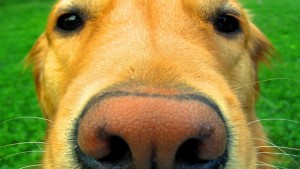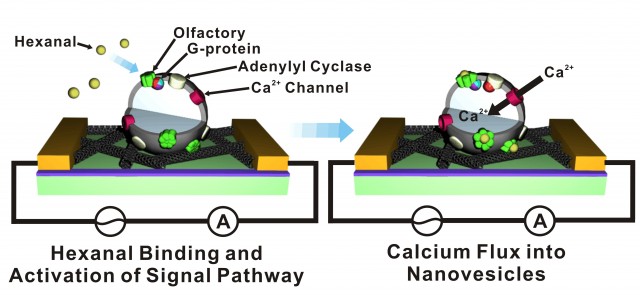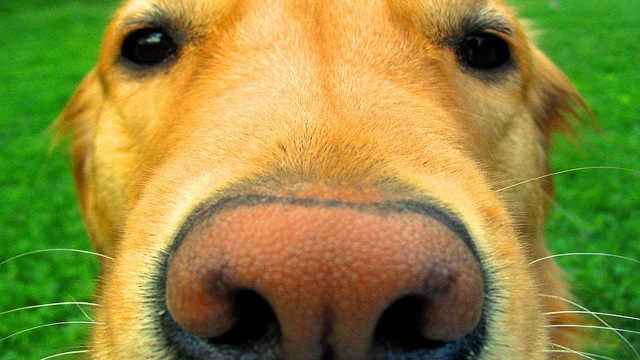
Dogs’ amazing sense of smell can help police officers find lost people, illegal drugs or smuggled food. Scientists use trained sniffer dogs to track pythons in the Everglades or find whales by smelling their floating poop. And some dogs can smell cancer too.
Scientists are working to build devices that can detect odors as sensitively as a dog’s nose. Now researchers in South Korea have built a sensor that works like a dog’s nose, without using canine sniffing cells. The new device combines a simplified version of the cells in dog’s nose with tiny transistors similar to those in our computers. It senses hexanal, a chemical commonly released by rotting food.
When a dog takes a whiff of something (possibly stinky to us!), chemical vapors bind to matching proteins on the surface of different cells in its nose. Binding of the aroma molecule sends a cascade of charged ions coursing through the cell. Those ions create an electric field that travels through the cell. This chemical and electrical wave travels along connected cells and neurons until it reaches the dog’s brain as a nerve impulse, signaling that the animal encountered that particular smell.
Tai Hyun Park and Seunghun Hong, of Seoul National University, with their colleagues, recreated a simplified version of the detecting cells in a dog’s nose using tiny bubbles made from cell membrane. The scientists engineered human kidney cells to produce the canine receptor protein for hexanal, a chemical released by rotting food.
These cells naturally contain a handful of accessory proteins that generate the ion cascade once the smell molecule binds to its receptor. The researchers shook the engineered cells and tiny bits of membrane pinched off into tiny bubbles that contained the dog receptor protein and the accessory proteins (see left side of the picture below).

Then the scientists placed these bubbles atop a web of conducting carbon nanotubes, hollow cylinders made from carbon sheets. When the receptor protein in the bubble captures hexanal, the other proteins begin the chemical cascade that ends with calcium ions flowing into the bubble (right side of the picture above).
